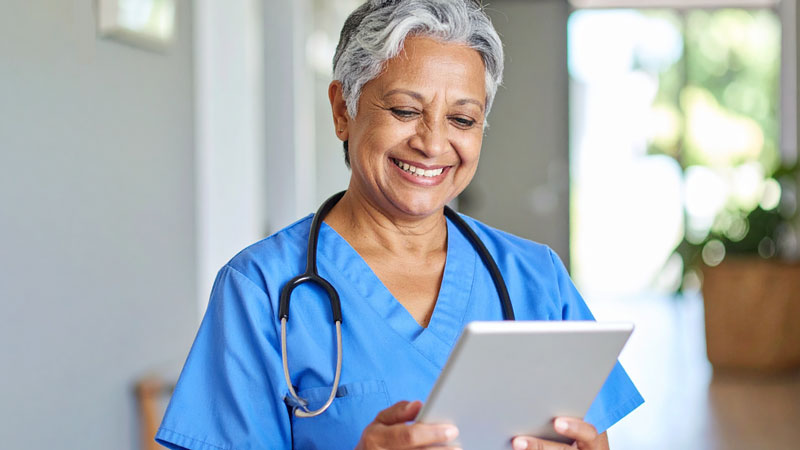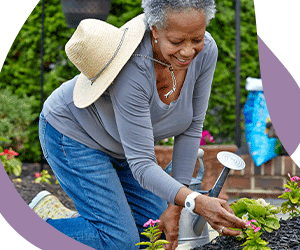With fewer hands on deck, ensuring resident safety becomes more challenging—especially during nights, weekends, or high-traffic daytime hours. That’s where smart emergency call solutions come in. From self-monitoring to external monitoring and hybrid systems, these technologies are helping communities fill the staffing gap without compromising care quality.
Understanding Monitoring Models in Senior Living
Let’s break down the differences between the three core monitoring options and how they impact staff workload and resident safety:
1. Self-Monitoring: Emergency Calls Go Directly to Facility Staff
Self-monitoring systems route all emergency calls and alerts directly to the community’s on-site staff. This is ideal for communities with robust staffing models and fast response protocols. However, when staff are stretched thin—covering multiple residents, assisting with medications, or responding to other calls—emergency response can be missed or delayed.
While self-monitoring ensures a personal, familiar response from staff for residents, it depends entirely on staff availability. As staffing gaps widen, and burnout increases, so does the risk.
2. External (24/7) Monitoring: All Emergency Calls Handled by an Off-Site Monitoring Center
With external monitoring, all emergency calls are directed to a professionally staffed monitoring center—available 24/7, including nights, weekends, and holidays. These trained operators triage calls, dispatch emergency services if needed, and follow escalation protocols set by the community.
This model ensures every call is answered, even during the busiest hours or lowest staffing periods. However, some communities prefer to maintain a more hands-on approach or feel external-only support may not provide the same level of familiarity and comfort to residents.
3. Hybrid Monitoring: Overflow Support When Staff Are Unavailable
Hybrid monitoring combines the best of both models. When staff are available and able to respond, calls go directly to them. If they are unavailable—due to simultaneous emergencies, staffing shortages, or after-hours schedules—the system automatically routes calls to the external monitoring center for immediate handling.
This flexible model helps communities:
- Extend staff coverage without hiring additional team members
- Maintain a high standard of safety even when short-staffed
- Ensure no emergency goes unanswered
Hybrid monitoring has become a key solution for communities balancing care standards with real-world staffing limitations.
The Impact of Staffing Shortages on Senior Care
According to a 2023 report from LeadingAge, 64% of providers saw no improvement in staffing compared to the previous year, and many cited burnout and low applicant interest as major hurdles.
In this environment, technology isn’t just a convenience—it’s a lifeline. Monitoring solutions can’t replace human care, but they extend its reach and reduce pressure on overworked teams.
How Hybrid Monitoring Helps Bridge the Gap
Here’s how communities benefit from implementing hybrid monitoring systems:
- Better coverage, day and night: With overflow routing to external professionals, residents get help even if staff are tied up or off-site.
- Improved response times: No call goes unanswered, which reduces risks tied to delayed fall response or unattended medical events.
- Reduced staff burnout: Staff can prioritize care tasks instead of monitoring dashboards or carrying emergency phones 24/7.
- Scalable solution: As staffing ebbs and flows, the monitoring model flexes to meet changing needs without compromising resident safety.
Real-World Scenarios
- During a shift change, a resident presses their emergency pendant. The on-site staff is temporarily unavailable, so the call rolls over to the monitoring center. An operator answers within seconds, speaks to the resident, and escalates to EMS as needed.
- At 2:00 AM, a fall alert triggers. Rather than relying on a limited night crew, the hybrid system routes the alert to external support, who follows the predefined escalation path, ensuring swift action.
These scenarios play out daily in assisted living communities—and hybrid monitoring ensures no one slips through the cracks.
A Smarter Way Forward with MGLiving
At MGLiving, we understand the realities facing today’s senior living providers. That’s why we offer configurable emergency call systems designed to support your community’s specific workflow—whether that’s self-monitoring, external monitoring, or a hybrid approach that grows with you.
Our solutions are built to help you maintain high standards of resident care while easing the load on your team. Because safety shouldn’t depend on staffing levels—and neither should peace of mind.
Visit MGLiving.com to learn more about how our monitoring options can help you bridge staffing gaps, enhance care delivery, and support your team.

